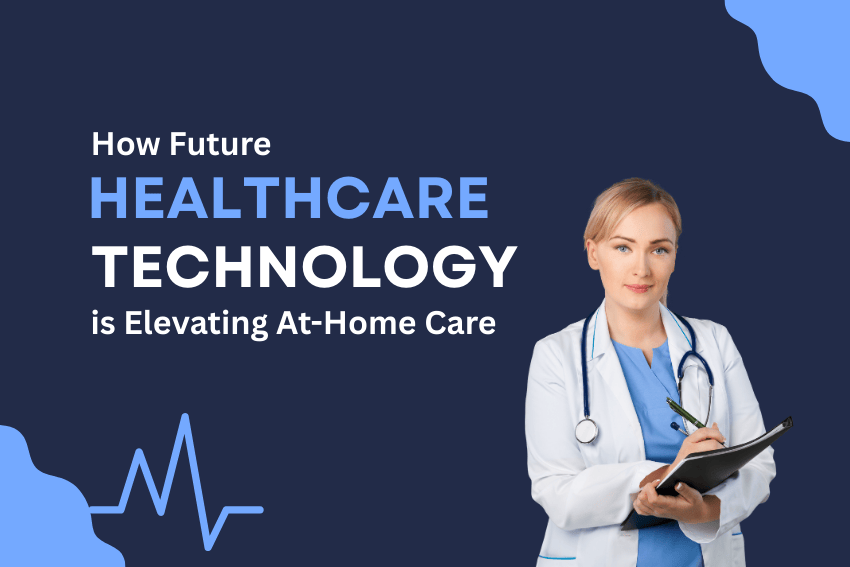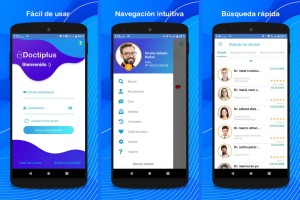The landscape of healthcare is changing fast, and future healthcare technology is at the heart of this transformation, especially when it comes to at-home care. Gone are the days when quality medical care meant long waits at a doctor’s office or hospital.

Today, advancements in technology are bringing healthcare directly to patients’ homes, making it more accessible, personalized, and efficient. From wearable devices to AI-driven diagnostics, these innovations are empowering people to take charge of their health without stepping out their front door.
Let’s dive into how these cutting-edge tools are reshaping at-home care and improving lives.
The Rise of At-Home Care
At-home care isn’t a new concept, but its scope and impact have grown tremendously thanks to technological advancements. With an aging population, rising healthcare costs, and a growing demand for convenience, more people are seeking ways to manage their health from the comfort of home.
Future healthcare technology is meeting this demand by offering solutions that are not only practical but also highly effective. Whether it’s monitoring chronic conditions, recovering from surgery, or maintaining overall wellness, at-home care is becoming a cornerstone of modern healthcare.
Key Technologies Transforming At-Home Care
Future healthcare technology is driving a wave of innovation that’s making at-home care more robust and reliable. Here are some of the most impactful advancements:
Telemedicine and Virtual Consultations
Telemedicine platforms allow patients to connect with doctors via video calls, reducing the need for in-person visits. These platforms are now equipped with tools for remote diagnostics, prescription management, and follow-up care, making healthcare more accessible than ever.
Wearable Health Devices
Smartwatches, fitness trackers, and medical-grade wearables monitor vital signs like heart rate, blood oxygen levels, and even glucose levels in real time. These devices provide patients and doctors with actionable data to catch potential issues early.
AI-Powered Diagnostics
Artificial intelligence is revolutionizing how we detect and manage health conditions. AI tools can analyze data from wearables, medical records, or even home-based tests to provide insights, predict health risks, and recommend personalized treatment plans.
Remote Patient Monitoring (RPM)
RPM systems use connected devices to track patients’ health metrics and send real-time updates to healthcare providers. This is especially valuable for managing chronic conditions like diabetes, hypertension, or heart disease.
Smart Home Health Devices
From blood pressure monitors to smart inhalers, these devices are designed for ease of use at home. They often integrate with apps to provide patients with insights and reminders, ensuring better adherence to treatment plans.
Robotics and Automation
Robotic assistants and automated medication dispensers are helping patients, especially the older people, manage daily healthcare tasks. These tools reduce the risk of missed doses or errors in medication management.
Benefits of Future Healthcare Technology in At-Home Care
Future healthcare technology is poised to transform at-home care by enhancing accessibility, efficiency, and personalization. Here are the key benefits:
Improved Access to Care
Telemedicine and remote monitoring devices, like wearable sensors and smart health trackers, allow patients to consult with healthcare providers from home. This reduces the need for in-person visits, benefiting those with mobility issues or in rural areas.
Enhanced Monitoring and Early Intervention
Advanced wearables and IoT-enabled devices can continuously track vital signs (e.g., heart rate, glucose levels) and detect abnormalities in real-time. AI algorithms analyze this data to alert healthcare providers early, preventing complications.
Personalized Treatment
AI-driven tools and precision medicine technologies tailor treatments to individual needs using genetic data and health histories. Smart medication dispensers ensure adherence to prescribed regimens.
Cost Efficiency
At-home technologies reduce hospital readmissions and in-person visits, lowering healthcare costs. Remote monitoring also minimizes emergency interventions by addressing issues proactively.
Increased Independence for Patients
Assistive technologies, like robotic aids and smart home systems, help older people or disabled individuals manage daily tasks, promoting autonomy while ensuring safety through fall detection or emergency alerts.
Data-Driven Insights
Integration of AI with health data provides actionable insights for both patients and providers. Predictive analytics can forecast health risks, enabling preventive measures.
Mental Health Support
Virtual therapy platforms and AI chatbots offer accessible mental health care, providing real-time support and reducing stigma around seeking help.
Streamlined Care Coordination
Cloud-based platforms enable seamless communication between patients, caregivers, and providers, ensuring all parties have up-to-date health information.
Real-World Impact: Stories of Change
To understand the power of future healthcare technology, consider the story of Sarah, a 65-year-old retiree with type 2 diabetes. A few years ago, managing her condition meant frequent doctor visits and constant worry about her blood sugar levels. Today, Sarah uses a continuous glucose monitor that syncs with her smartphone, alerting her to fluctuations in real time. Her doctor reviews the data remotely and adjusts her treatment plan as needed, all without Sarah leaving her home. This technology has given her peace of mind and better control over her health.
Similarly, John, a heart disease patient, relies on a wearable device that tracks his heart rate and alerts his cardiologist to irregularities. This early warning system helped catch a potential issue before it became serious, avoiding a costly hospital stay. These stories highlight how future healthcare technology is not just a concept—it’s changing lives today.
Challenges and Considerations
While the advancements in at-home care are exciting, they come with challenges. Data privacy is a major concern, as wearable devices and remote monitoring systems collect sensitive health information. Ensuring robust cybersecurity measures is critical to protect patient data. Additionally, not all patients have access to high-speed internet or the latest devices, which can create disparities in care. Healthcare providers and tech companies must work together to address these gaps and make future healthcare technology inclusive for all.
Another consideration is the learning curve for patients and caregivers. While many devices are user-friendly, some may require training or support, especially for older adults. Providers should offer resources and guidance to ensure patients can use these tools effectively.
The Future of At-Home Care
Looking ahead, the potential of future healthcare technology in at-home care is limitless. Innovations like 5G connectivity will enhance the speed and reliability of remote monitoring, while advancements in AI could lead to even more accurate diagnostics. We may also see the rise of virtual reality therapy for mental health or advanced robotics for in-home rehabilitation. As these technologies evolve, they’ll continue to make healthcare more patient-centered, efficient, and accessible.
Why It Matters
The shift toward at-home care powered by future healthcare technology isn’t just about convenience, it’s about redefining how we approach health and wellness. By bringing cutting-edge tools into patients’ homes, we’re creating a healthcare system that’s more proactive, personalized, and empowering. Whether you’re managing a chronic condition or simply staying on top of your health, these innovations are making it easier to live well, wherever you are.
FAQs
What is future healthcare technology in at-home care?
Future healthcare technology in at-home care refers to advanced tools like telemedicine, wearable devices, AI diagnostics, and remote monitoring systems that enable patients to manage their health from home.
How does telemedicine improve at-home care?
Telemedicine allows patients to consult with healthcare providers virtually, reducing the need for in-person visits and making care more accessible, especially for those with mobility issues or in remote areas.
Are wearable health devices accurate?
Yes, many wearable health devices are medical-grade and provide accurate data on vital signs like heart rate, blood oxygen, and glucose levels. However, it’s important to use devices approved by healthcare regulators.
How secure is my health data with these technologies?
Data security is a priority, but risks exist. Reputable devices and platforms use encryption and other measures to protect data. Always choose trusted providers and follow best practices for cybersecurity.
Can anyone use at-home healthcare technology?
Most at-home healthcare technologies are designed to be user-friendly, but some may require training or technical support, especially for older adults or those less familiar with technology.


